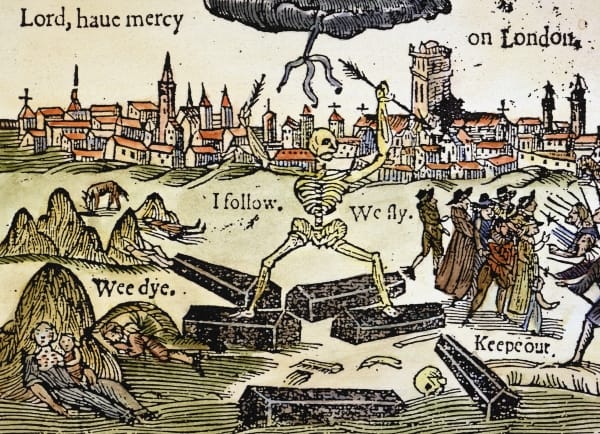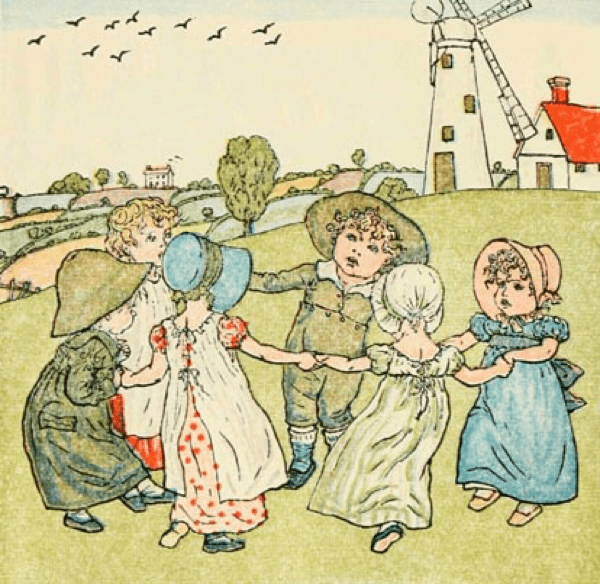लॉकडाऊन -
आणि पहाटवेळांच्या स्वप्नांना मी चुकवू शकलो नाही
ज्यात होते संक्रमित झालेले किटक
जे होते शिंप्याने भट्टी केलेल्या नवथर, ओलेत्या आणि
पिळलेल्या कपड्यातही !
कालबाह्य झालेल्या ईयममध्ये
काहीच नजरअंदाज करू शकलो नाही.
तो मैलाचा दगड आणि
सहा छिद्रे असलेली कुक्कुटाक्षाच्या आकाराची ती सोंगटी
ती व्हिनेगरने उजळलेल्या प्लेगबाधित नाण्यांनी
भरून वाहणारी लोहावगुंठीत ओंजळ
त्यामुळेच इमोट सिडेल आणि रोलँड टॉरची ती
दुःखद गाथा माझ्या मनी तरळली
क्वारंटाईनच्या दुतर्फा रेषेने
त्यांचं प्रेम असफल झालेलं.
त्यांच्या निशब्द प्रेमालापाने नदी दुथडी वाहायची
जी आता आटून गेलीय.
मग मी पुन्हा निद्राधीन होतो आणि
या खेपेसही स्वप्न पाहतो,
ज्यातला बहिष्कृत यक्ष त्याच्या हरवलेल्या पत्नीसाठी
मेघांपाशी निरोप पाठवतो
कॅमलतीरीच्या खुणांचा आणि गुरांच्या पाऊलवाटांचा
नकाशा मेघांना दिशादायी ठरतो
मध्येच ते मेघ कंठीहारासारखे, मयूरपंखी पिसाऱ्यासारखे
तर कधी रंगवलेल्या हत्तींसारखे दिसत !
जणू कुरणांवर आणि कुंपणांवर
आच्छादलेली कशिदा केलेली रजईच !
बांबूंची वने, हिमाच्छादित शिखरे
फेसाळणारे धबधबे, खाड्या
रुंद पंखांच्या बगळ्यांची आकाशातली चित्रलिपी
पर्जन्योपरांत चकाकून उठणारी कमलदले
आणि आरपार शिरून
मंत्रमुग्ध करणारा दुर्मिळ पवन
एकेकाळी जडत्व आणणारा हा प्रवास दीर्घ आणि मंद वाटला
पण तो गरजेचा होता...
आर्मिटेज यांच्या या कवितेत जीवनाचे गमक दडलेलं आहे. कवितेच्या आरंभी ते संसर्ग झालेल्या किटकांचा उल्लेख करतात जो मानवी मनाशी निगडित आहे. कुठल्याही व्यक्तीला बंदिस्त केलं की त्याच्या देहावर होणारे परिणाम दृश्य स्वरूपातले असल्याने उठून दिसतात, मात्र मनोवस्थेचं काय ? खरं नुकसान तिथंच तर झालेलं असतं. संसर्गित किटक उडू शकत नाहीत की जगूही शकत नाहीत. तीच अवस्था मनाची होते. मग सुरु होतॊ कल्पनांचा खेळ, स्वप्नांचे दृष्टांत आणि भासाचा लपंडाव !
कवितेला पुढे नेताना स्वप्नांचा आधार घेत आर्मिटेजनी तिला असं काही रंगवलं आहे की वाचणाऱ्याच्या मनावरचं मळभ आस्ते कदम दूर व्हावं. परीटघडीच्या कपड्यापासून ते भिजत पडलेल्या कपड्यातदेखील हा संसर्ग आढळतो असं सांगून ते मनोवस्थेचं दुभंगलेपण समोर आणतात. कवितेत येणारा ईयमचा उल्लेख आधार देऊन जातो. उत्तरमध्य इंग्लंडमधील डर्बीशायर परगण्यातील ईयम या गावाला एक इतिहास आहे. १६६५ मधल्या भयंकर प्लेगच्या साथीत या गावाने स्वतःला जगापासून विलग केलं होतं जेणेकरून प्लेगचा प्रसार रोखला जावा. महामारीवर विजय मिळवण्यासाठी ईयमच्या घटनेने ब्रिटिश जनतेस नेहमीच नैतिक आधार दिलाय. आर्मिटेजना स्वप्नात ईयममध्ये दिसणाऱ्या वस्तू मानवी मनाच्या विविध भावनांचे प्रतिनिधित्व करतात. मैलाचा दगड, छिद्रान्वेषी सोंगटी, लखलखीत नाण्यांची ओंजळ ही त्यासाठीची रूपके होत. इमोट सिडेल आणि रोलँड टॉरची क्वारंटाईनमधली प्रेमकथा माहित नसलेला युरोपियन प्रेमी दुर्मिळच म्हणावा लागेल. कवितेत त्याचा उल्लेख खुबीने नेमक्या जागी येतो.
पुढे जाऊन आर्मिटेज थेट मेघदूताचा आधार घेतात आणि आपल्या पत्नीच्या विरहाने पोळलेला यक्ष तिच्यासाठी मेघातून निरोप धाडतो तसे मन आपल्या हरवलेल्या प्रिय बिंदूच्या शोधात निघते असं सुचवतात. मेघांसाठी वापरलेली विशेषणे खासच आहेत. मेघदूताचा संदर्भ ते थेट इंग्लंडमधील कॉर्नवॉलस्थित कॅमल नदीच्या तीराशी जोडतात तेंव्हा थक्क होऊन जातो. या पंक्तीनंतर आर्मिटेज यांची प्रतिभा आकाशाला गवसणी घालते आणि निसर्गचित्राची इंद्रधनुष्यी पखरण करते. खूप काळ कोंडून राहिल्यावर निसर्ग कसा खुणावतो याचं हे देखणं वर्णन आहे. कवितेच्या अंती आर्मिटेज म्हणतात की एरव्ही हाच प्रवास जडत्वाचा वाटतो, दीर्घ संथ भासतो पण आता तो गरजेचा आहे कारण त्याशिवाय मनाला उभारी येणार नाही. मनावरचं मळभ झटकून केवळ शब्दचित्राच्या आधारे जगण्याची उमेद बळकट करणारी ही कविता मनावर खोल ठसा उमटवते.
Lockdown by Simon Armitage
And I couldn’t escape the waking dream
of infected fleas
in the warp and weft of soggy cloth
by the tailor’s hearth
in ye olde Eyam.
Then couldn’t un-see
the Boundary Stone,
that cock-eyed dice with its six dark holes,
thimbles brimming with vinegar wine
purging the plagued coins.
Which brought to mind the sorry story
of Emmott Syddall and Rowland Torre,
star-crossed lovers on either side
of the quarantine line
whose wordless courtship spanned the river
till she came no longer.
But slept again,
and dreamt this time
of the exiled yaksha sending word
to his lost wife on a passing cloud,
a cloud that followed an earthly map
of camel trails and cattle tracks,
streams like necklaces,
fan-tailed peacocks, painted elephants,
embroidered bedspreads
of meadows and hedges,
bamboo forests and snow-hatted peaks,
waterfalls, creeks,
the hieroglyphs of wide-winged cranes
and the glistening lotus flower after rain,
the air
hypnotically see-through, rare,
the journey a ponderous one at times, long and slow
but necessarily so.
 The Great Plague of London, 1665. Google Images.
The Great Plague of London, 1665. Google Images.The Great Plague of 1665
In 1665, plague once again struck mainland Britain. Some historians believe it took root as early as late 1664, held at bay by the winter months. However, once the winter was over, the plague spread in earnest. The first place it afflicted was the poor London suburb of St. Giles in the Field. From there, the pestilence made its way through other overcrowded, impoverished areas of the city: Stepney, Shoreditch, Clerkenwell and Cripplegate and finally Westminster.
The plague took between four to six days to incubate. By the time its symptoms appeared, it was too late. Victims developed a high fever and vomiting. Excruciating pain wracked their limbs. Then came the tell-tale buboes which formed in the lymph glands, which could swell to the size of an egg before bursting. Infected houses were sealed, the doors marked with a red or white cross with the words “Lord have mercy on us” daubed beneath. Samuel Peeps noted how daytime streets were strangely silent. At night, however, they were active as corpses were collected and carried away in carts for disposal in the great plague pits dug about the city.
People believed that the plague was airborne, possibly because one of the first signs of the infection was that the victims could smell a sweet, sickly fragrance about them. This smell, however, was not the plague but the scent of the victim’s internal organs which were collapsing and rotting. However, because of this telltale odor, people began to carry posies of flowers which they held to their noses to keep the plague at bay. The custom became incorporated in the children’s song about the Great Plague, “Ring a Ring of Roses.”

Ring a Ring a Roses by Kate Greenaway. 1881. Public Domain.
When the scale of the epidemic became obvious, anyone who could afford to leave London did so. By early summer 1665, the King, his court, and parliament had all fled, leaving behind those citizens who could not afford to abandon their homes and livelihoods. These fortunate few did not return until February 1666 when the plague began to fizzle out. However, out of those left behind, records indicate that between 1665 and 1666, out of a total population of 460,000 as few as 68,596 or as many as 100,000 people died in London of the contagion.
However, although people remember this plague as The Great Plague of London, it afflicted other areas too. Ports such as Southampton were stricken and gradually, aided by trade and by those fleeing infected areas, the plague made its way north. It passed through and infected the towns of the Midlands and then hugged the northeastern side of England, arriving at Newcastle and York. However, rural Derbyshire and the northwest remained relatively safe until, in August 1665, the plague reached Eyam.
When the scale of the epidemic became obvious, anyone who could afford to leave London did so. By early summer 1665, the King, his court, and parliament had all fled, leaving behind those citizens who could not afford to abandon their homes and livelihoods. These fortunate few did not return until February 1666 when the plague began to fizzle out. However, out of those left behind, records indicate that between 1665 and 1666, out of a total population of 460,000 as few as 68,596 or as many as 100,000 people died in London of the contagion.
However, although people remember this plague as The Great Plague of London, it afflicted other areas too. Ports such as Southampton were stricken and gradually, aided by trade and by those fleeing infected areas, the plague made its way north. It passed through and infected the towns of the Midlands and then hugged the northeastern side of England, arriving at Newcastle and York. However, rural Derbyshire and the northwest remained relatively safe until, in August 1665, the plague reached Eyam.



कोणत्याही टिप्पण्या नाहीत:
टिप्पणी पोस्ट करा